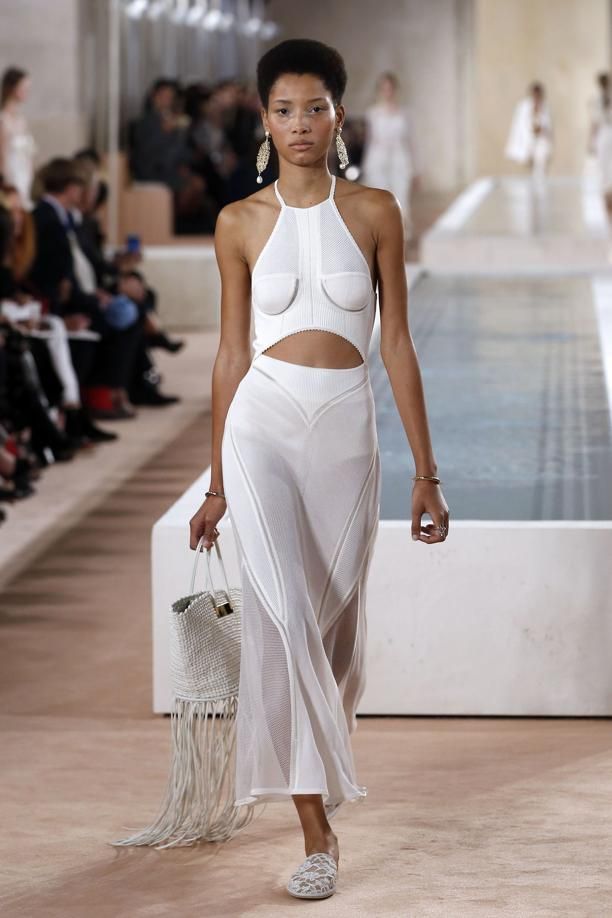The secret of Cristóbal Balenciaga’s couture resides in the fact that he never sketched – his dresses came to life directly on the bodies of his models. From this very first step, the couturier of couturiers was able to obtain his canvas, a sort of reworked first draft adjusted until he achieved the perfect interpretation of his idea. These canvases, made of percale, would then be cut out. Each piece was annotated with remarks and traversed by lines to denote position, orientation, and the proper crossing to define the garment’s structure and construction. Then would come the preliminary stitches, white on black, prefacing the couture stitches that would come last. Of course, the master adapted his technique to each of his chosen materials to create a piece – the idea was to bring the fabric to the best version of itself. Christian Dior would say: “With fabrics, we do what we can. Balenciaga, he does what he wants.” Indeed, this faultless couturier had nothing to hide. He would even invent new lines, the barrel line or blouses where the waist would repose on the hips held in by a draped belt. Cristóbal Balenciaga thus brought the world a number of pieces with such purity that he had not a single stitch to hide. His evening dresses scorned embroidery and other adornments to be presented in a white that was so pure it left no room for error.
Practicing couture like an architect, Balenciaga often put black and white in contrast, leaving his pieces away from the distraction of color. While the pairing of these shades is today irrefutably chic, it was seen as revolutionary back then. Black symbolized a certain classicism, if not mourning, while white was often associated with futurism. All the couturier’s strength resided in his ability to conquer his own independence vis-à-vis fashion. He composed very personal silhouettes without being obliged to follow any exterior trends – Cristóbal Balenciaga had a certain idea of beauty and elegance, and no one could influence it. Purity and rigorous shapes hold the secret to his silhouettes. With white on black, nothing moved – it was total equilibrium. The couturier’s pieces established a poignant dialogue: with white on black, the line was brought to life upon contact with new and surprising pieces. This timeless pairing reached its height when lighting up severe and majestic evening dresses with wide collars made of ermine, mink, or arctic fox. The idea: white would accompany black coats and suits with even more depth.
These whites evoked the lace strawberries on the garb of Spanish monarchs, or the immaculate collars of bourgeois costumes, synonymous with pomp and restraint. It was often white satin that dressed up Balenciaga’s pieces. The master’s religious influences would bring Christian Dior to say that “clothing was his religion”. Opaque or transparent, matte or shiny, white owes its apparent nature to the sumptuousness of the fabrics chosen, while its triumphant aesthetic comes from the seeming simplicity of the cuts. A skirt is formed from lace highlights, an embroidered composition, or a thick grouping of silk velvet. For his last runway, his “prologue” for the Balenciaga brand, Alexander Wang signed off on an all-white collection with geometric cuts, bows as an homage to the founder, volumes in the back, and rounded shoulders, all of it in an immaculate white from start to finish.

Leave a Reply